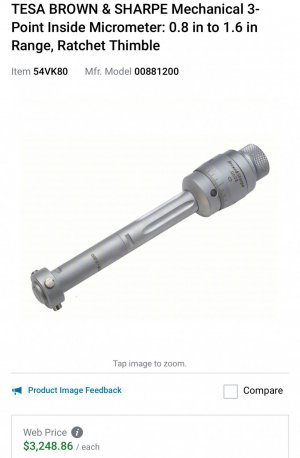- Joined
- May 7, 2023
- Messages
- 1,366
Good morning!
I've recently tried to up my precision when it comes to lathework but am struggling a bit.
I have a cylinder that is 50mm diameter, I bore it through completely 25mm diameter.
After this I try tolatheTurn a "pocket" that is 8.5mm deep and 27.95mm diameter.
I've tried this twice so far.
First time I used a internal micrometer (5-30mm) and measured it to 27.99 or so but the bearing slid in very easily which makes it seem like the hole is way larger than 28.00mm, hence I can't trust that micrometer?
Second time I used a bore gauge and set a external micrometer(that I trust) to 27.95 and got a final measurement of +3 so 27.98 I think? This was a tighter fit but I could still slide the bearing in by hand, which again makes me question if the hole is really <28mm?
It's a bit time consuming so I would appreciate any tips before I spend 3 hours to try again.
Somewhat related, anyone got a firm grip on fits when it comes to bearings? It's supposed to be 28.00 outer diameter, do I want to aim for a slipfit or press fit? And if pressfit, how do I know which tolerance to look towards?
Turn, you turn on a lathe.
What you are attempting is not the easiest of tasks and pockets especially when turned on the lathe can be tricky as given the boring bar should be raised above center your dials will not read correctly. Then there's spring passes to be taken into account.
Measuring bores is an art in itself and it can take some time to become proficient at it. An 8.5MM deep bore is a real bugger to measure as many measuring methods will simply not work or at the least can be deceptive when you try to measure them.
Without knowing the brand or condition of your tools, let alone your methods and skill level, its hard to say where things are going wrong. It may simply be a case of relying too much on your measuring instruments and machine dials and not enough on your skills and trial and error.
As to the fit for a given bearing, is this going into a highspeed precision assembly or a wheel barrow axle?
Worlds of difference between the two and how you would need to fit the bearing..



